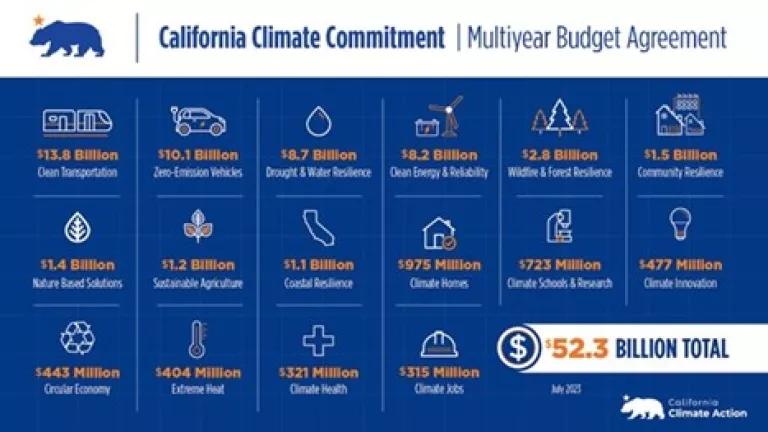California Public Power Renews Its Commitment to Independent Evaluation of Energy Savings
This month, the publicly-owned utilities (POUs) in California committed to conducting independent annual evaluations to ensure that energy efficiency savings can be used to avoid power plants, and that efficiency programs continue to improve over time. This is an important step for public power to ensure that their customers receive the greatest benefit out of efficiency programs.
POUs consist of approximately forty city-owned utilities, electric cooperatives, and irrigation districts that provide electricity to about a quarter of Californians. They include big cities like Los Angeles and Sacramento, as well as small ones like Truckee-Donner and Biggs. In total, California’s POUs serve as much electricity as the entire state of Colorado consumes every year. And they are critical players in statewide efforts to create jobs, clean the air, and to curb climate change like expanding energy efficiency and clean energy.
Renewed Commitment to Independent Evaluation
Earlier this month, public power reported to the California Energy Commission on their progress at helping customers save energy and lower their utility bills through efficiency programs, as well as their plans for the coming decade. As part of that effort, POUs are renewing their commitment to conduct independent evaluations of their energy efficiency programs every year.
The organizations that represent the various POUs around the state - the California Municipal Utilities Association (CMUA), the Northern California Power Agency (NCPA), and the Southern California Public Power Authority (SCPPA) – provided the following unified statement committing to conduct annual independent evaluations:
“[P]ublic power commits to annual submittals of the results associated with independent EM&V analyses, consistent with the original provision of AB 2021.[1]”
To further underscore this commitment, NCPA and NRDC sent a joint letter to the CEC detailing our common understanding of the importance of independent evaluation, measurement, and verification (EM&V) and POUs’ requirement to evaluate energy efficiency programs every year.
Benefits of Evaluating Efficiency Programs
Independent and timely evaluation of energy efficiency programs is essential for customers to get the greatest benefit out of the programs. Evaluations provide feedback to utility planners about which programs are working and which need improvement, how much energy is actually being saved, and how much money customers are saving on their bills.
Robust evaluation of energy savings is also critical to allow utility resource planners to avoid investments in conventional power generation and infrastructure. In order for resource planners to be comfortable with energy savings estimates, utilities must conduct frequent evaluations of their programs using commonly accepted methodologies. Energy efficiency is designed to displace the need for dirty generation and strong evaluation of the programs helps achieve that goal.
California needs to head toward increasing statewide consistency of and collaboration on evaluation estimates of energy savings. During this process, POUs’ conducting timely and independent evaluation will be a critical part of the statewide effort.
Efficiency Programs Yield Tremendous Benefits
Since POUs began reporting their energy savings in 2006, they have saved their customers nearly $1.4 billion. Because these energy efficiency programs are so cost-effective, POUs are continuing to invest about $130 million every year into energy efficiency programs, like rebates for LED light bulbs, or recycling old inefficient refrigerators. But in order to know where the best, or most strategic, bang for the buck is, POUs need ongoing feedback from independent assessments.
Net Benefits of Public Power’s Energy Efficiency Programs

Energy efficiency programs also deliver health benefits to customers by avoiding pollution from conventional power plants. In 2012, POUs’ energy efficiency programs prevented power plants from emitting over 1 million tons of global warming pollution (the equivalent of removing a quarter million cars off the road) and 75 tons of NOx, the primary contributor to smog and a cause of respiratory illnesses.
NRDC supports public power’s renewed commitment to annual, independent evaluations of their energy efficiency programs. Taking advantage of the feedback provided by evaluations will ensure the efficiency programs provide ever greater bill savings and environmental benefits moving forward.
[1] AB 2021, Ch. 734, Section 3(e)(3). (Formerly PU Code § 9615(3)(e)(3)âEach local publicly owned electric utility shall report annually to its customers and to the State Energy Resources Conservation and Development Commission . . . the results of an independent evaluation that measures and verifies the energy efficiency savings and reduction in energy demand achieved by its energy efficiency and demand reduction programs.



